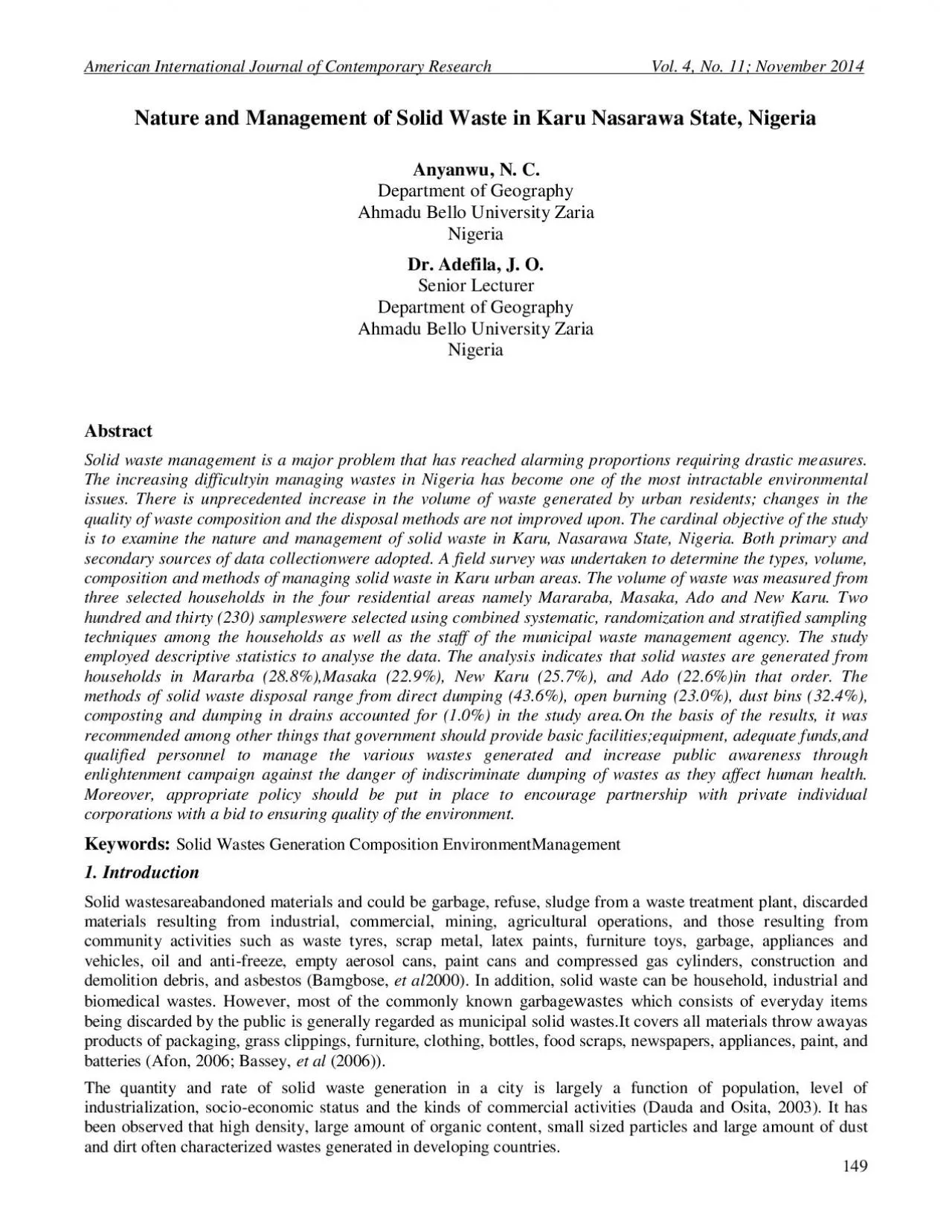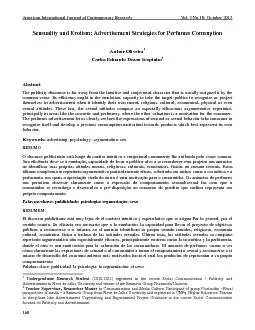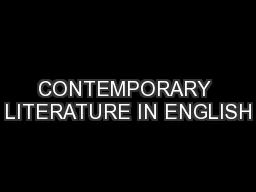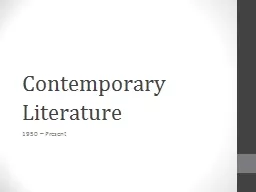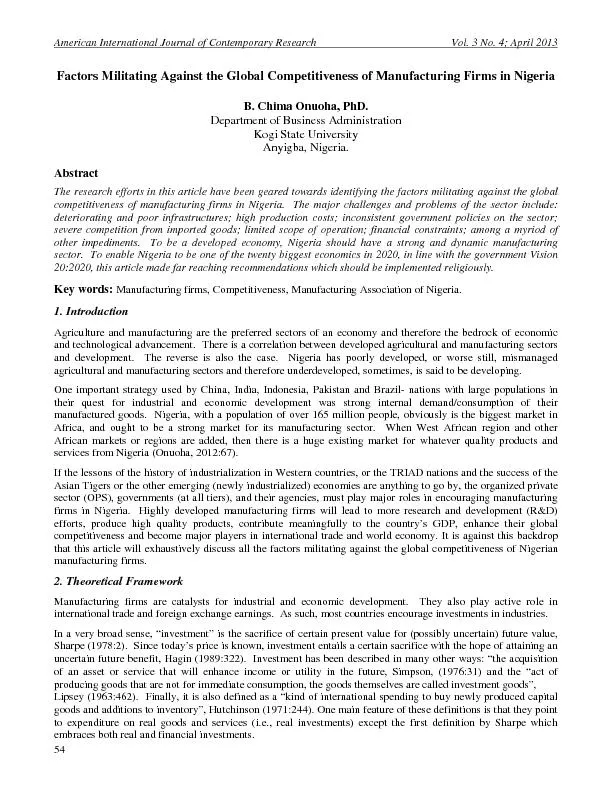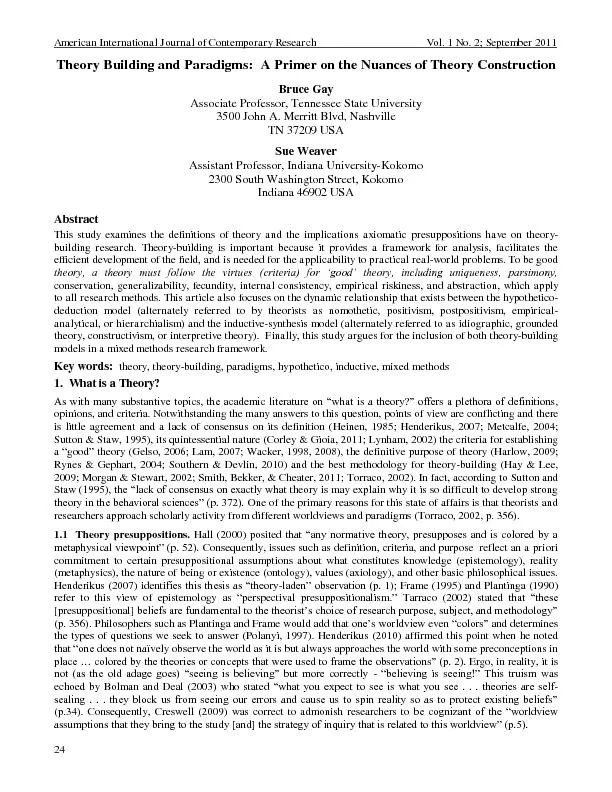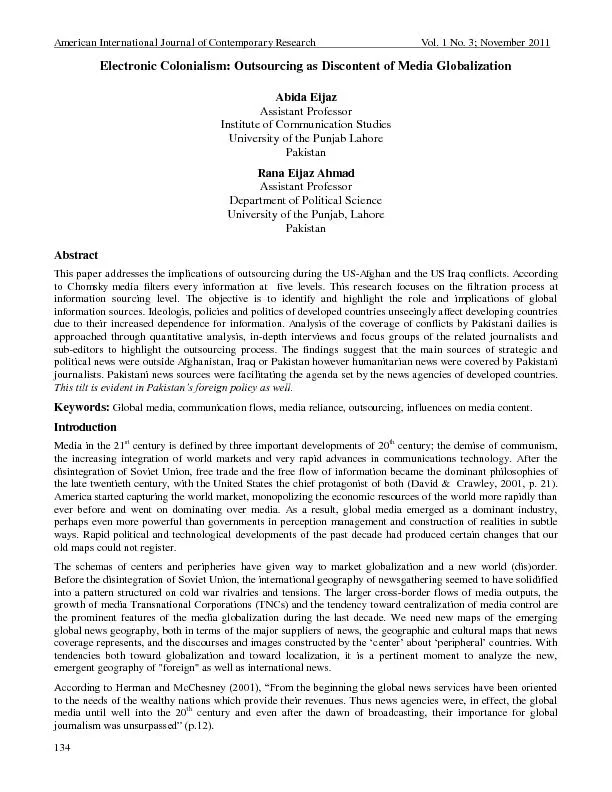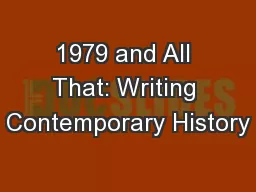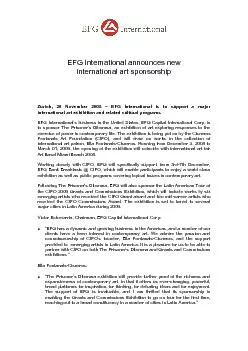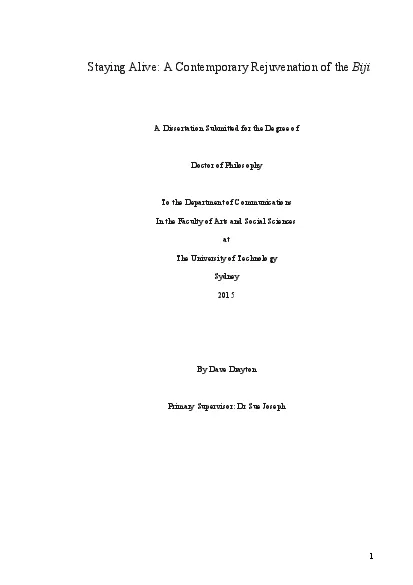PDF-American International Journal of Contemporary Research
Author : adah | Published Date : 2021-08-22
Vol 4No 11November 2014149Nature and Management of Solid Waste in KaruNasarawa State NigeriaAnyanwuN CDepartment of GeographyAhmadu Bello University ZariaNigeriaDr
Presentation Embed Code
Download Presentation
Download Presentation The PPT/PDF document "American International Journal of Contem..." is the property of its rightful owner. Permission is granted to download and print the materials on this website for personal, non-commercial use only, and to display it on your personal computer provided you do not modify the materials and that you retain all copyright notices contained in the materials. By downloading content from our website, you accept the terms of this agreement.
American International Journal of Contemporary Research: Transcript
Download Rules Of Document
"American International Journal of Contemporary Research"The content belongs to its owner. You may download and print it for personal use, without modification, and keep all copyright notices. By downloading, you agree to these terms.
Related Documents

